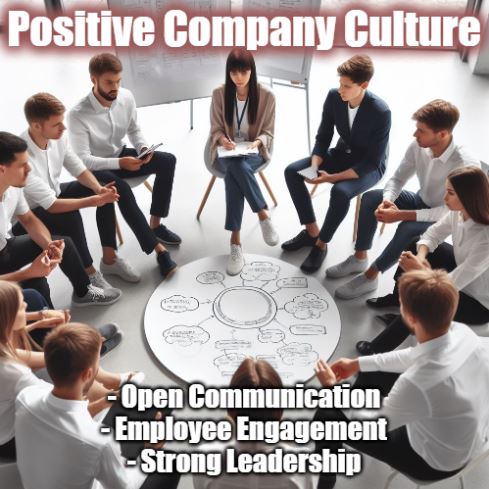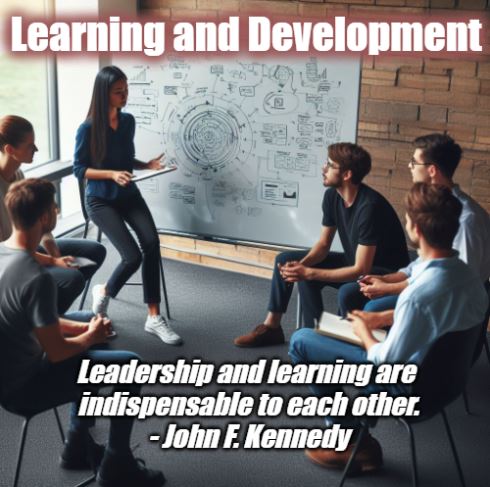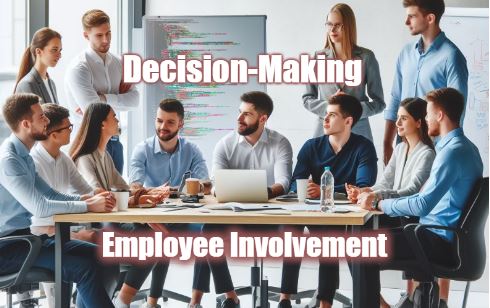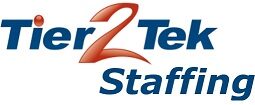In today’s competitive job market, talent retention strategies have become more critical than ever. Businesses and organizations are constantly seeking innovative ways to retain their top-performing employees, and staffing agencies, job agencies, employment agencies, recruitment agencies, and placement agencies play a significant role in this endeavor.
Fact About Talent Retention Strategies
- Cost of Employee Turnover: According to the Society for Human Resource Management (SHRM), replacing an employee typically incurs a cost equivalent to 6 to 9 months of their salary. For instance, for an employee earning an annual salary of $60,000, this translates to recruitment and training expenses ranging from $30,000 to $45,000.
- Impact of Company Culture: A positive company culture is a significant driver of talent retention. Companies with a strong cultural fit have 28% less employee turnover, according to a report by the Harvard Business Review.
- Importance of Learning and Development: A study by LinkedIn found that 94% of employees would stay at a company longer if it invested in their career development.
- Feedback and Recognition: Employees who receive regular feedback and recognition are more likely to stay with their current employer. A Gallup survey revealed that employees who do not feel recognized are twice as likely to say they’ll quit in the next year.
- Flexible Work Arrangements: The COVID-19 pandemic has emphasized the importance of flexible work arrangements. A Gartner survey found that 80% of company leaders plan to allow employees to work remotely at least part of the time after the pandemic, which can be a retention strategy.
The success of any organization relies on its ability to attract and retain talented individuals who can contribute to its growth and prosperity. In this article, we will explore 20 unique and effective talent retention strategies that can help your organization thrive in the fast-paced world of today.
1. Fostering a Positive Company Culture

Creating a vibrant and inclusive company culture is crucial for retaining talent. When employees feel a strong sense of belonging, they are more likely to stay committed to the organization. A positive company culture involves promoting values, ethics, and a sense of community that resonates with employees. It can be achieved through team-building activities, clear communication, and leadership that sets a positive example.
- Clarity of Values and Mission: A positive company culture begins with a clear definition of the organization’s core values and mission. When employees understand the company’s purpose and the principles that guide its actions, they are more likely to align themselves with its goals.
- Open Communication: Transparent and open communication is crucial in creating a positive culture. When employees have access to information and feel that their voices are heard, it enhances trust and collaboration within the organization.
- Strong Leadership: Positive company culture starts at the top. Leaders play a pivotal role in setting the tone for the organization. They should lead by example, demonstrate ethical behavior, and foster a culture of trust, respect, and accountability.
- Employee Engagement: Engaged employees are more likely to stay with an organization. Engagement can be fostered through initiatives that involve employees in decision-making, offer opportunities for skill development, and acknowledge their contributions.
- Recognition and Appreciation: Regular recognition of employee achievements and contributions is vital for a positive culture. When employees feel valued and appreciated, they are motivated to stay and continue to excel in their roles.
2. Offering Competitive Compensation and Benefits
Offering competitive compensation and benefits is a cornerstone of effective talent retention. It’s crucial to provide employees with a package that not only matches industry standards but also reflects the value they bring to your organization. Here’s an in-depth look at this strategy:
Competitive Compensation
Competitive compensation includes salaries, bonuses, and other monetary incentives that match or exceed the prevailing rates in your industry and region. When employees are paid competitively, they feel their work is recognized and rewarded appropriately, which is a strong motivator for them to stay with your organization.
Regular Salary Benchmarking
To ensure your compensation remains competitive, it’s essential to regularly benchmark salaries against industry standards. This practice helps you identify and address any disparities and make necessary adjustments to stay competitive.
Benefits Packages
Benefits packages go beyond salary, offering non-monetary perks that impact employee retention. Common benefits include:
Health Insurance: Offering health plans for employees and their families reduces stress and improves well-being.
Retirement Plans: Retirement options like 401(k)s show your commitment to employees’ long-term financial security.
Paid Time Off (PTO): Generous PTO policies, including vacation, sick days, and holidays, support work-life balance.
Flexible Work Arrangements: Options like remote work, flexible hours, or compressed workweeks can enhance employee retention.
Tuition Reimbursement: Helping employees continue their education fosters loyalty and professional growth.
Professional Development: Offer in-house training, workshops, and resources to help employees grow and advance.
Childcare Assistance: Supporting working parents with childcare facilities or subsidies improves work-life balance.
Transportation Benefits: Providing commuter benefits or parking solutions reduces commuting costs for employees.
Retention Bonuses: Offering bonuses tied to milestones encourages long-term employee commitment.
3. Investing in Continuous Learning and Development

Investing in the professional growth of your employees involves offering opportunities for skill development, workshops, and access to educational resources. A commitment to ongoing learning and development demonstrates that you value your employees’ growth and career advancement.
- Individual Development Plans: Working with employees to create individual development plans helps align their personal career goals with the organization’s objectives. These plans can be customized and adapted as employees progress in their careers.
- Training and Workshops: Offering regular training sessions and workshops on relevant topics ensures that employees remain up-to-date with industry trends and best practices. These sessions can cover technical skills, leadership development, or any area that is pertinent to their roles.
- Promoting Certifications and Qualifications: Encouraging employees to obtain relevant certifications and qualifications in their field demonstrates a commitment to their professional development. These qualifications can be a source of pride and motivation for employees.
- Leadership Development: Identifying and nurturing future leaders within the organization is critical for long-term success. Leadership development programs help employees build the skills and confidence necessary to take on leadership roles.
4. Establishing Employee Feedback Mechanisms
Establishing open channels for employees to share their thoughts and concerns fosters a culture of communication and collaboration. This feedback loop enables organizations to identify and address issues promptly, making employees feel heard and valued.
- Anonymous Surveys: Regularly conducting anonymous surveys is an effective way to gather honest feedback from employees. These surveys can cover a wide range of topics, including job satisfaction, workplace culture, and managerial effectiveness.
- Suggestion Boxes: Traditional suggestion boxes or digital equivalents provide employees with a simple, anonymous method to share their ideas, concerns, and suggestions. The anonymity encourages honest feedback.
- Open-Door Policy: Promoting an open-door policy ensures that employees feel comfortable approaching their managers or superiors to discuss any issues or suggestions. This approach fosters a culture of trust and approachability.
- Peer Feedback: Implementing peer feedback mechanisms allows employees to provide input on their colleagues’ performance, encouraging accountability and mutual support.
- Exit Interviews: Conducting exit interviews with departing employees can provide valuable insights into the reasons behind their departure. These insights can help the organization make necessary changes to reduce turnover.
- Technology Platforms: Leverage technology platforms, such as employee feedback software or apps, to streamline feedback collection and analysis. These platforms can provide real-time data and analytics to help identify trends and areas for improvement.
- Feedback Recognition: Acknowledging and recognizing employees who provide valuable feedback can incentivize participation. This recognition demonstrates that feedback is valued and acted upon.
- Actionable Response: It’s crucial to follow up on employee feedback with tangible actions. Employees need to see that their concerns and suggestions lead to real changes and improvements.
5. Involving Employees in Decision-Making

Involving employees in the decision-making process is a powerful way to make them feel that their input is valued and significant. Encouraging their active participation in shaping the organization’s direction can enhance engagement and retention.
- Idea Sharing Platforms: Creating platforms for employees to submit ideas, suggestions, and feedback can be an effective way to involve them in the decision-making process. These platforms allow employees to contribute ideas and solutions on an ongoing basis.
- Decision Impact Assessments: Prior to making significant decisions, consider conducting impact assessments to gauge how those decisions will affect employees. This information can help make more informed choices and reduce negative consequences.
- Transparent Communication: Openly communicate the decision-making process, criteria, and outcomes to employees. Transparency in decision-making builds trust and helps employees understand the rationale behind the choices made.
Talent retention strategies are the cornerstone of creating a motivated and loyal workforce. These strategies include fostering a positive company culture, which ensures that employees feel valued and connected to the organization. Offering competitive compensation and benefits keeps employees satisfied and financially motivated, while investing in continuous learning and development empowers them to enhance their skills and advance in their careers.
Establishing employee feedback mechanisms fosters open communication and issue resolution, and involving employees in decision-making provides a sense of ownership and engagement. These combined strategies not only help retain top talent but also contribute to a productive and thriving workplace.
